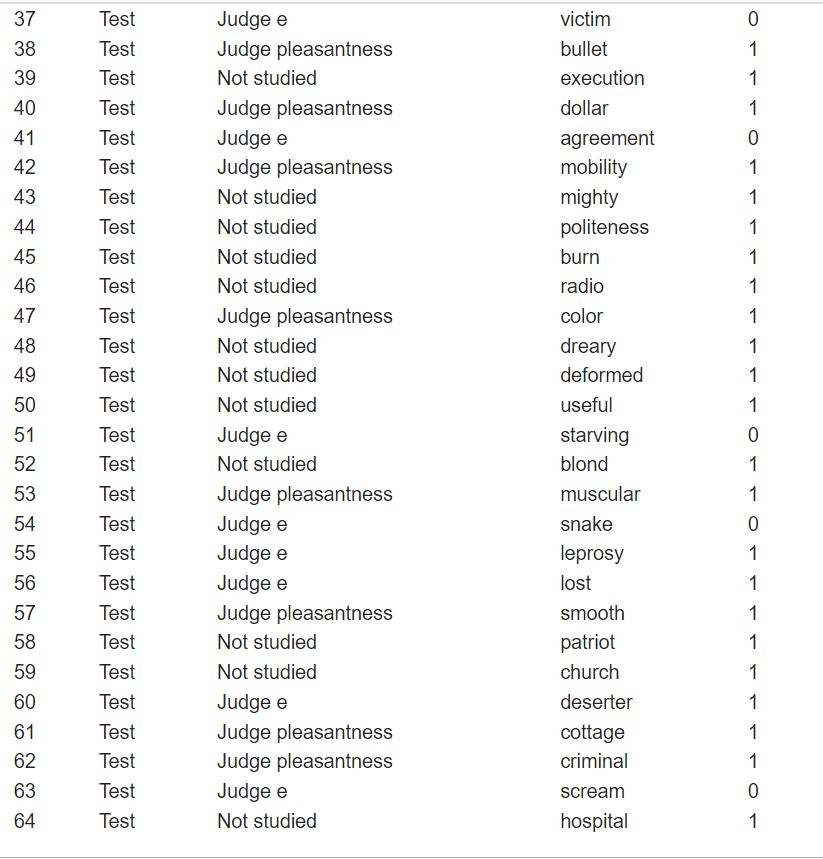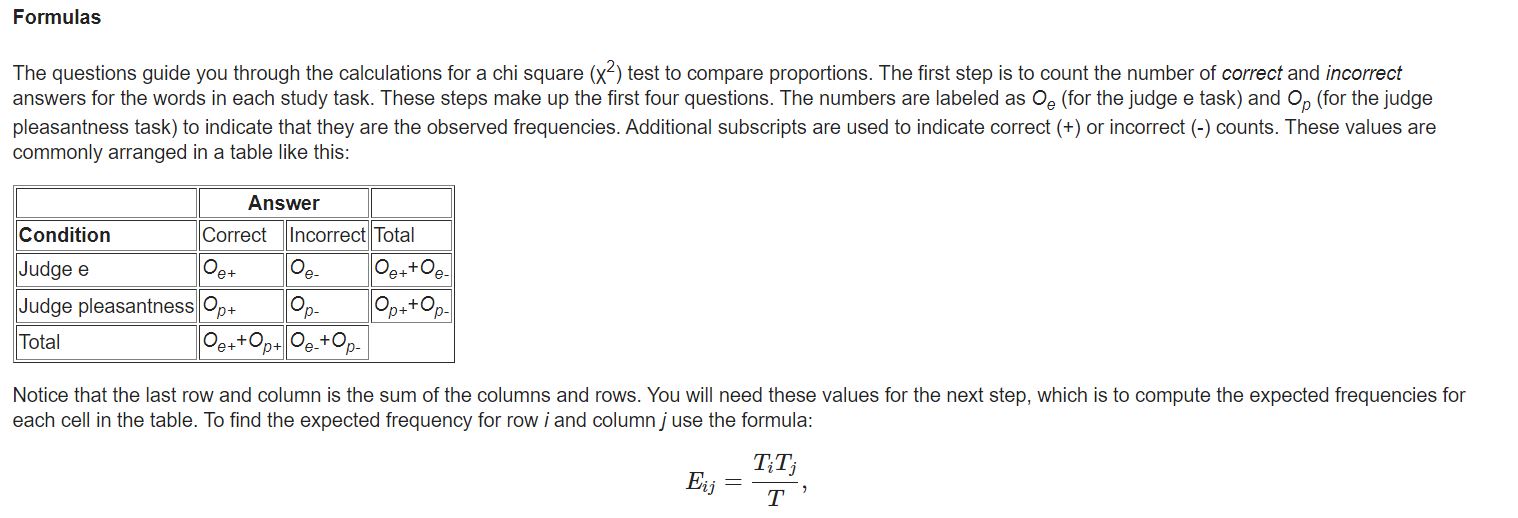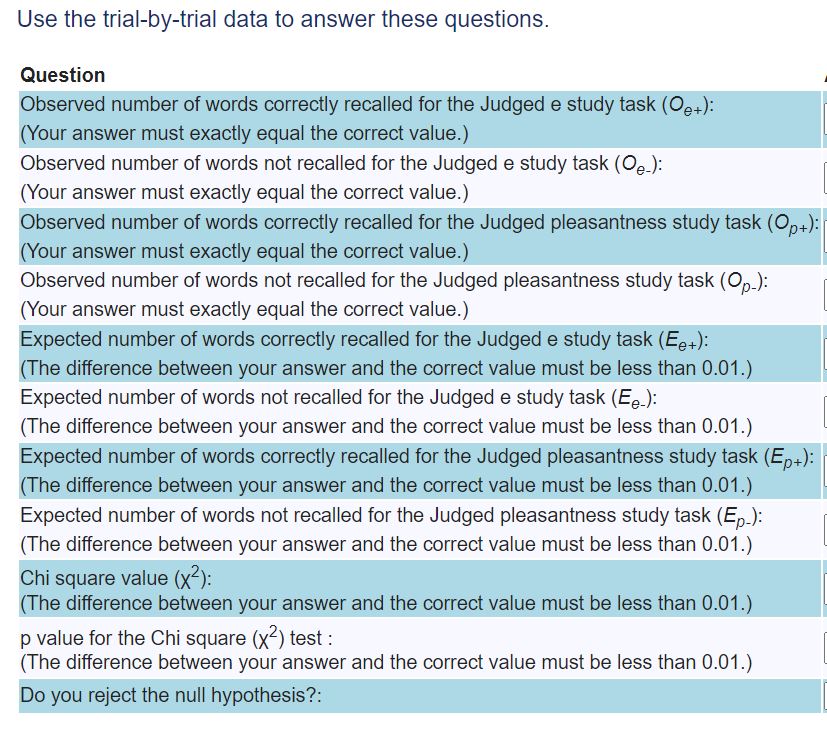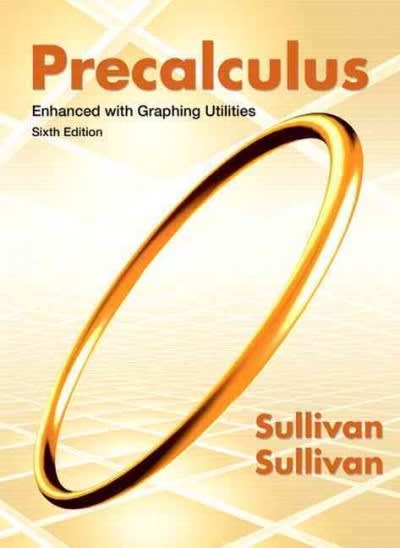Please help me with this question about The Chi Square (2). For this practice excercise you will NOT need to use the data for the words that were not studied.
3? 38 39 4O 41 42 43 44 45 46 47 48 49 50 51 52 53 54 55 56 57 58 59 60 61 62 63 64 Test Test Test Test Test Test Test Test Test Test Test Test Test Test Test Test Test Test Test Test Test Test Test Test Test Test Test Test Judge e Judge pieasantness Not studied Judge pieasantness Judge e Judge pieasantness Not studied Not studied Not studied Not studied Judge pieasantness Not studied Not studied Not studied Judge e Not studied Judge pieasantness Judge e Judge e Judge e Judge pieasantness Not studied Not studied Judge e Judge pieasantness Judge pieasantness Judge e Not studied victim bullet execution dollar agreement mobility mighty politeness burn radio color dreary deformed useful starving blond muscular snake leprosy lost smooth patriot church deserter cottage criminal scream hospital _LDLxLLLLLLDLLDALLxLLLLLDxLLD Formulas The questions guide you through the calculations for a chi square (x2) test to compare proportions. The first step is to count the number of correct and Incorrect answers for the words in each study task. These steps make up the rst four questions. The numbers are labeled as 06 (for the judge e task) and CD {for thejudge pleasantness task) to indicate that they are the observed frequencies. Additional subscripts are used to indicate correct (+) or incorrect (-) counts. These values are commonly arranged in a table like this: Answer Condition Correct Incorrect Total J udge 8 09+ 03_ Oe++ 03_ Judge pleasantness Op+ 0p, Op++ Op, Total 09++Op+ Oe_+0p_ Notice that the last row and column is the sum of the columns and rows. You will need these values for the next step, which is to compute the expected frequencies for each cell in the table. To nd the expected frequency for row iand column 1' use the formula: TtTj Eij * T } where T is the total number of trials that contribute to the table, T,- is the sum of items in row i, and Tj is the sum of items in column j. With the formula, you can complete a table of expected frequencies: Answer Condition Correct Incorrect Judge e E9+ Ee_ Judge pleasantness Ep+ Ep, These values are then used to compute the chi square (x2) statistic: L 2 E70) 2 (k k x:E ' 1:21 Ek Where L is the number of cells in the 2x2 table. This statistic has degrees of freedom df=1. Finally, you can calculate the p-value for the x2 statistic. This is most easily done with an online calculator. Use the trial-bytrial data to answer these questions. Question Observed number of words not recalled for the Judged e study task (09): (Your answer must exactly equal the correct value.) Observed number of wrdos not recalled for the Judged pleasantness study task (Op): (Your answer must exactly equal the correct value.) Expected number of words not recalled for the Judged e study task (E9): (The difference between your answer and the correct value must be less than 0.01.) Expected number of words not recalled for the Judged pleasantness study task (Ep_): (The difference between your'answer and the correct value must be less than 0.01.) p value for the Chi square (x2) test : (The difference between your answer and the correct value must be less than 0.01.) l










